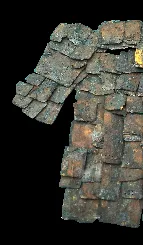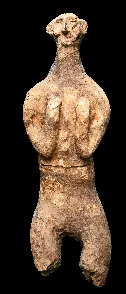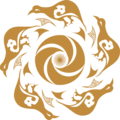A number of joint archaeological expeditions with scholars from Japan, Germany, France, Russia, Italy, China, and Australia function in the republic. New international projects are constantly appearing. As a result, a number of interesting discoveries were made, unique finds were discovered, some of which were transferred to the State Museum of History of Uzbekistan. E.g., in October 2001, the Museum received a unique clay sculpture of an idol from the site of Jarkutan (1300 – 1350 BC).
In January 2002, the collections were enriched with iron-clad military armor of the 15th century, found in 2001 at the Shahrukhiya site by academician Yu. F. Buryakov. Unique in its completeness, this find remains the only one in the entire Central Asia. In 2004, the archaeological collection of the Museum was replenished with fragments of ceramic vessels from the sites of Kindyktepa, Tunket (Tashkent region) and Minguryuk (Tashkent). Copies of items from the excavations of the Obirahmat site such as the left parietal part of the skull, the pyramid of the temporal bone, the teeth of an ancient man, which could date the origin of modern humans in Central Asia, were transferred to the Museum in April 2007.
You can learn more about this topic in the book-album “The Collection of the State Museum of the History of Uzbekistan” (part one) (Volume XXVI) from the series "Cultural Legacy of Uzbekistan in the World Collections".
The main sponsor of the project is the oilfield services company Eriell-Group.


